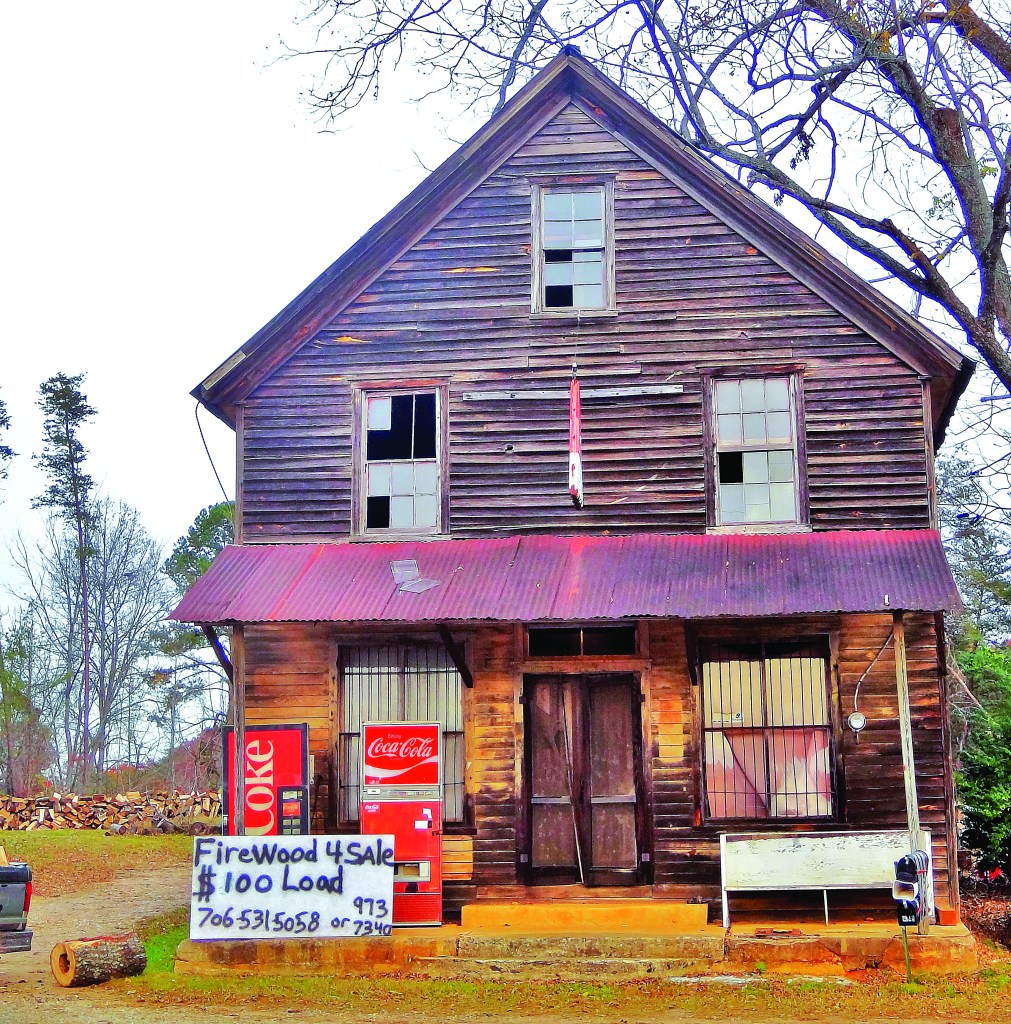Georgia’s diverse countryside is dotted with numerous sites of old villages and towns that no longer exist — ghost towns.
They have names such as Auraria, Estelle, Scull Shoals, Ebenezer, Powelton, Munnerlyn, Griswoldville, Bethany, Mountain View, Godfrey, Apalachee, Sunbury and on and on.
They brim with history. The dead town of Wrightsboro, founded in McDuffie County in 1768, was the southernmost Quaker settlement in the United States. In Greene County, the abandoned town of Scull Shoals was home to Georgia’s first paper mill.
Many of the deserted burgs still retain old structures such as churches, general stores, schools, houses, factory ruins, and infrastructure like roads and bridges — all in various states of dilapidation. Their old cemeteries may harbor graves dating back to the 1700s.
Decay and Demise
Reasons for their demise and final abandonment are many and varied. Some perished when their sprawling textile mills closed. Some slid into ruin when railroads bypassed them or their cotton-based economy succumbed to the boll weevil.
The dead town of Auraria in Lumpkin County, which became the nation’s first gold rush boom town when gold was discovered in Georgia in 1828, came to an inglorious end after thousands of gold seekers departed for more promising riches in California.
I find myself captivated by these places — intrigued by how they got there, what they were like in their heyday and what led to their downfall. My most recent dead-town visit was to Wrightsboro, near the McDuffie County seat of Thomson.
Quaker Influence
Wrightsboro might have been just another forgotten ghost town except for the uniqueness of its founders and early residents — Quakers. In 1768, Joseph Mattock and Jonathan Sell, Quakers, obtained a grant of 40,000 acres from Georgia’s royal governor, Sir James Wright, the town‘s namesake.
By 1775, more than 60 families had settled in the town and 200 in the township — all Quakers, who built homes, gristmills, a meeting house, and other structures.
But Wrightsboro did not survive, perhaps because of its isolation. By 1920, it was a ghost town. Today, all that remains are a circa 1810 Methodist Church, a circa 1918 general store and a cemetery with Revolutionary War-era graves.
Frontier Village
Another recent visit was to the ruins of Scull Shoals along the Oconee River, deep in the Oconee National Forest in Greene County. Scull Shoals began as a frontier village around 1792.
Early on, Dr. Lindsay Durham developed medicines from his extensive herb garden there and opened a sprawling sanatorium. In later years, the village became a town. In addition to Georgia’s first paper mill, it contained homes, stores, gristmills, sawmills — and later a four-story brick textile mill that became the economic mainstay. At the mill’s height, 500 workers tended its 4,000 spindles. But a series of devastating floods in the 1880s ravaged the mills; by the 1920s, the town was abandoned.
Today, as I travel through Georgia’s many economically distressed towns, I wonder about their future — and which of them will be tomorrow’s ghost towns.







